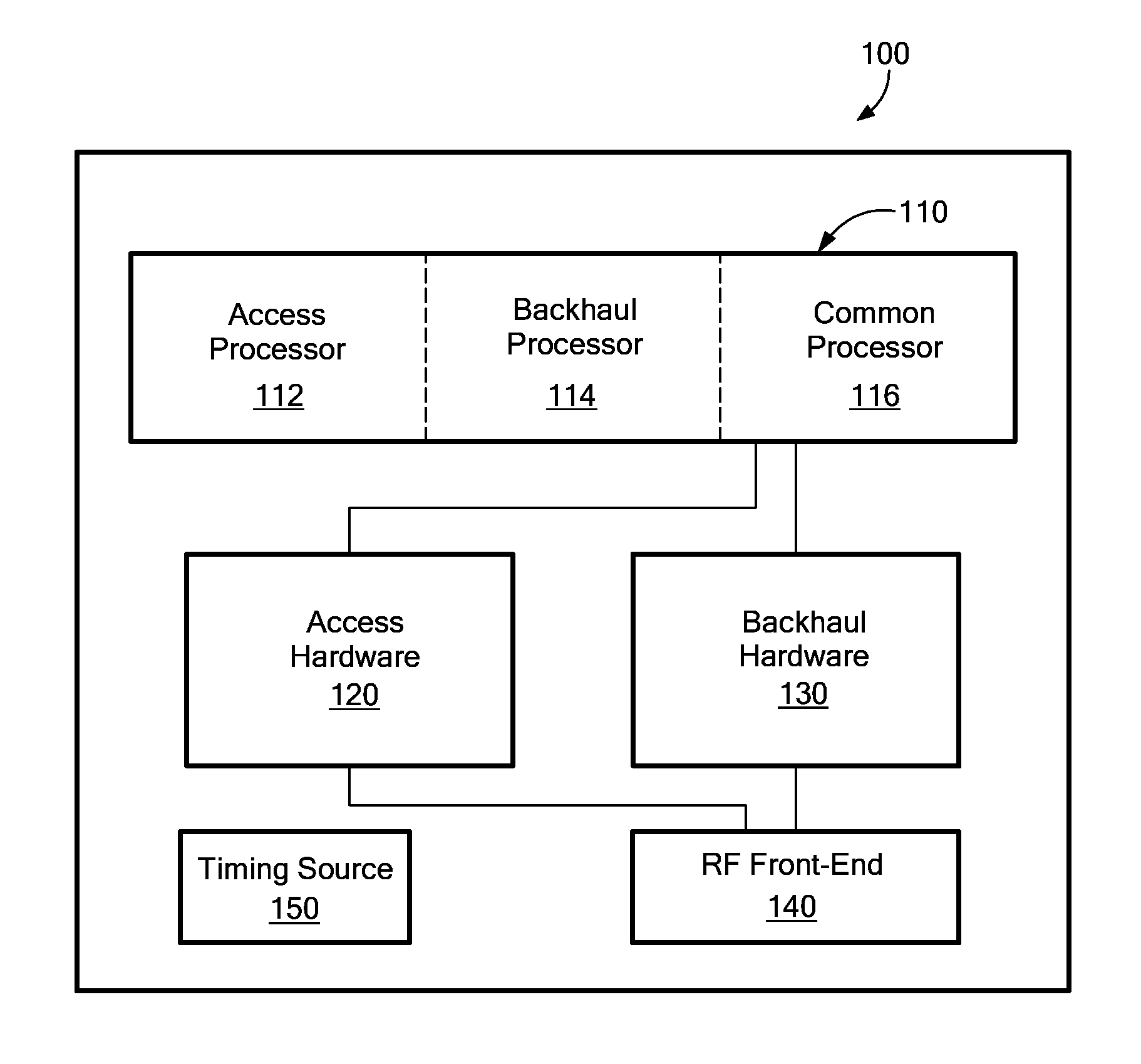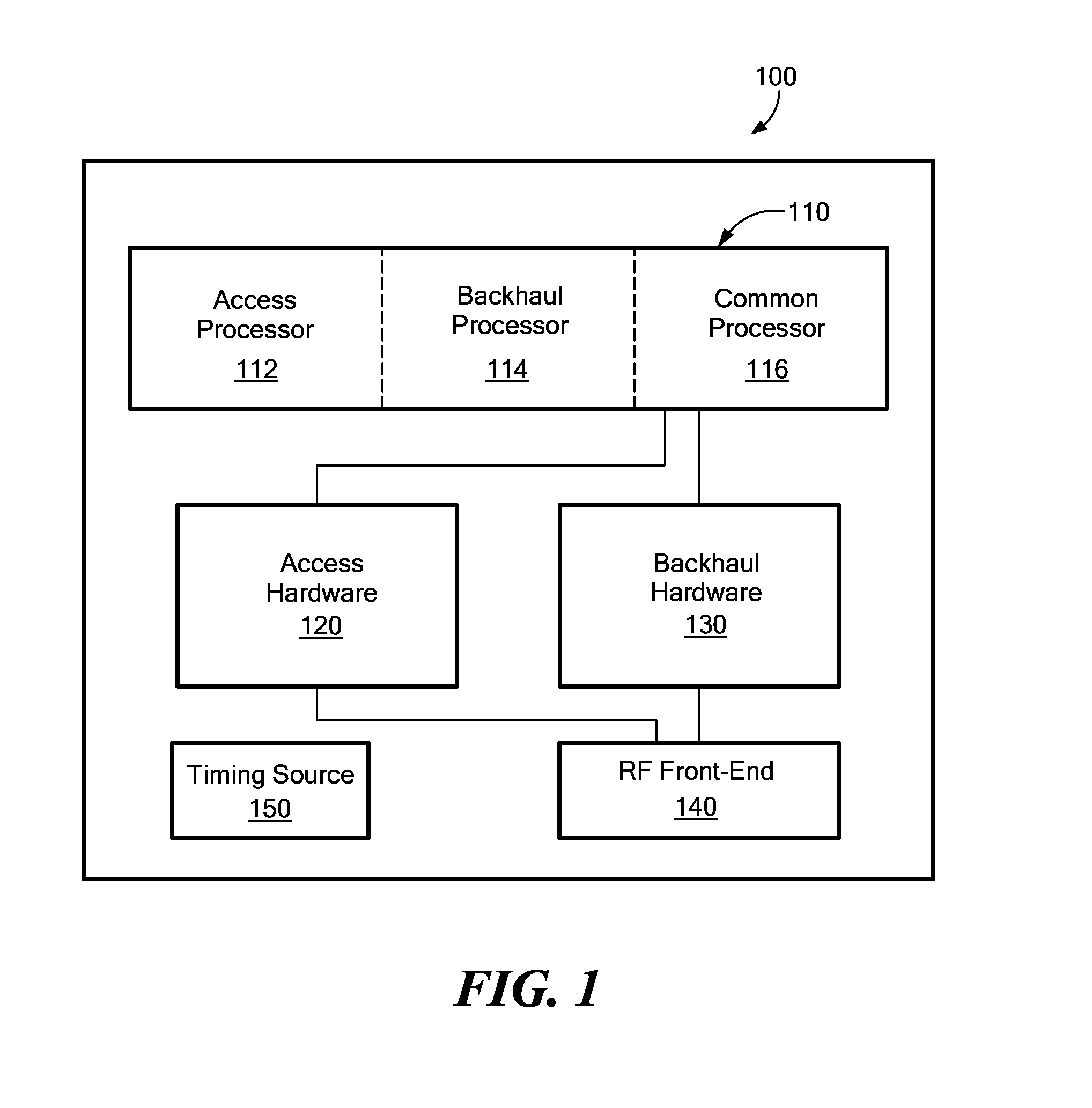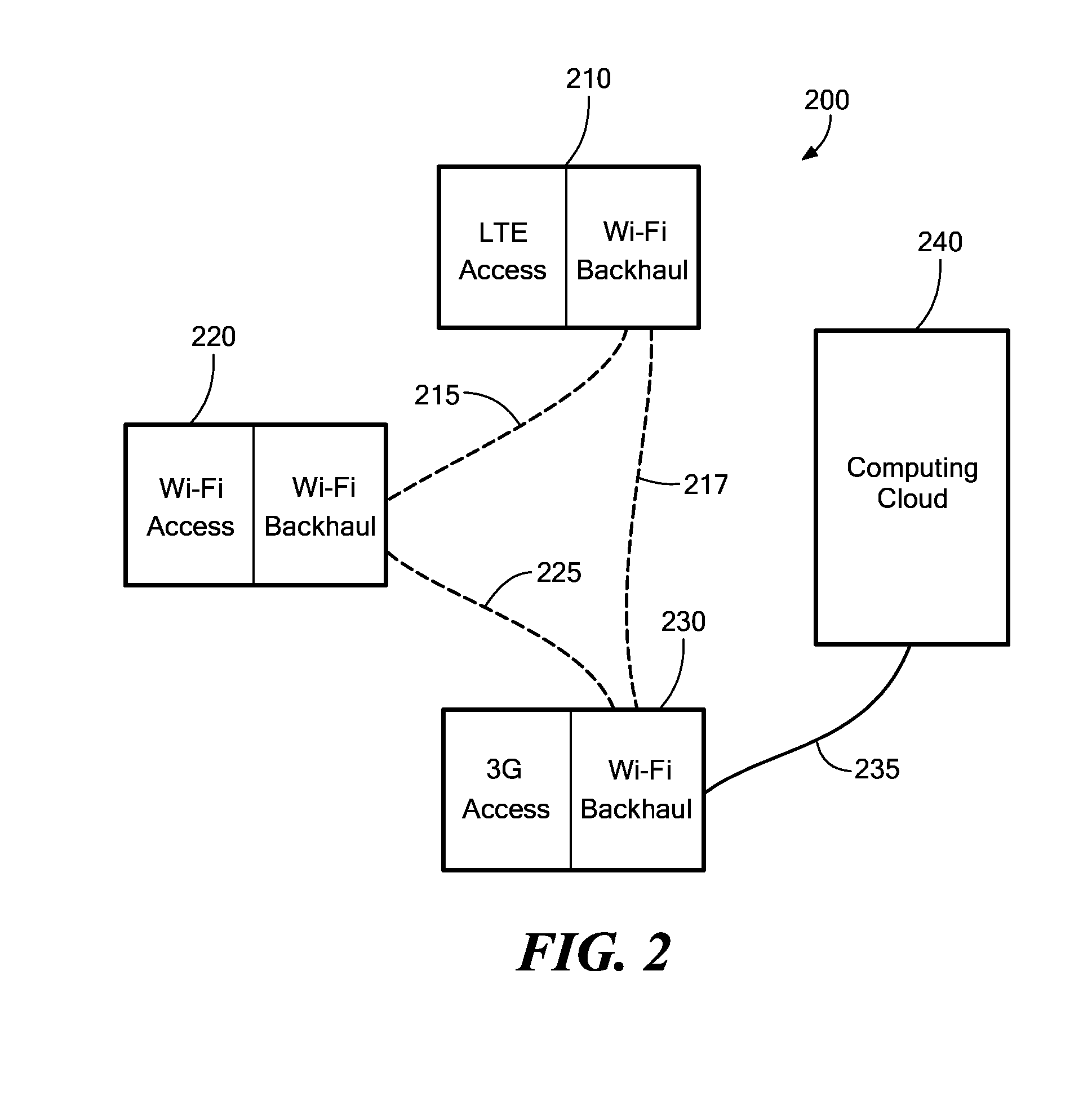Multi-RAT Node Used for Search and Rescue
a multi-rat node and search and rescue technology, applied in the field of multi-rat nodes, can solve the problems of inability to network, rarely having cell phone coverage, attendant damage to portions of the network, etc., and achieve the effect of facilitating distributed computation of network topology and/or path determination
- Summary
- Abstract
- Description
- Claims
- Application Information
AI Technical Summary
Benefits of technology
Problems solved by technology
Method used
Image
Examples
Embodiment Construction
[0021]Although mesh networks have been deployed in the past, these networks have not contained nodes capable of: (1) operating on white-space frequencies; (2) dynamically switching roles; (3) autonomously using self-organizing network (“SON”) techniques; and (4) operating within a heterogeneous environment. The present invention, and embodiments described herein include systems, networks, apparatuses, and methods realizing these capabilities.
[0022]The embodiments of this invention differ conceptually from prior art gateway paradigms because the custom designed layer stacks of this invention abstract the protocols that make each radio technology unique, thereby creating an agnostic data set that can be seamlessly routed throughout a wireless network. In other words, in the embodiments described herein, we have created an adaptation layer that spans all MAC layers so that we can bridge between heterogeneous access layers. In embodiments of this invention, individual nodes operating on...
PUM
 Login to view more
Login to view more Abstract
Description
Claims
Application Information
 Login to view more
Login to view more - R&D Engineer
- R&D Manager
- IP Professional
- Industry Leading Data Capabilities
- Powerful AI technology
- Patent DNA Extraction
Browse by: Latest US Patents, China's latest patents, Technical Efficacy Thesaurus, Application Domain, Technology Topic.
© 2024 PatSnap. All rights reserved.Legal|Privacy policy|Modern Slavery Act Transparency Statement|Sitemap



